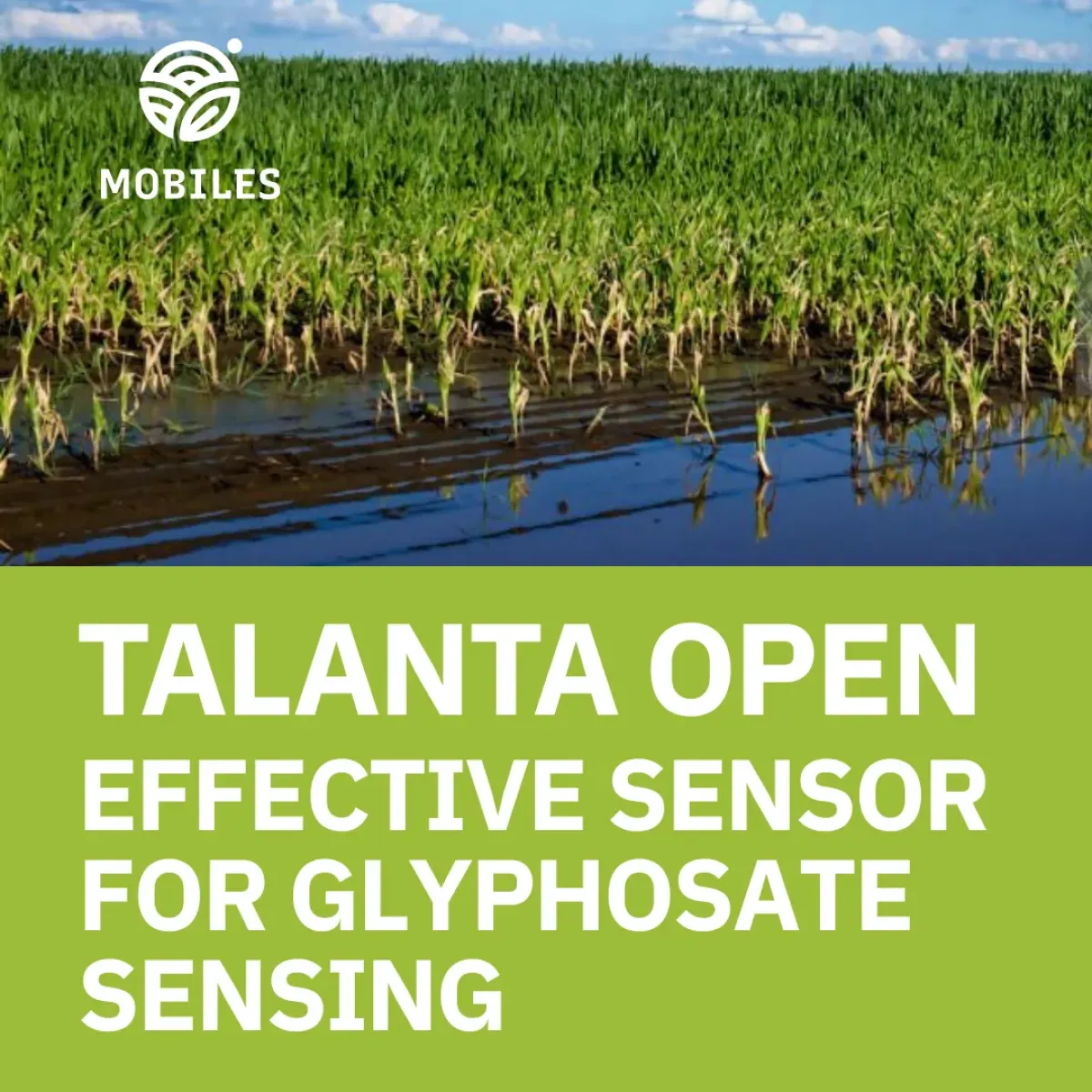
Glyphosate is a broad-spectrum herbicide for controlling grassy weeds, introduced to the market in the 1970s under the brand name “Roundup.” Glyphosate is widely used for agricultural weed control, despite being potentially hazardous to human health. It works by inhibiting a specific enzyme pathway essential for plant growth, leading to the eventual death of the targeted plants. This enables farmers to kill unwanted plants and weeds while maintaining their crops. This feature made glyphosate very popular and led to its extensive use in agriculture, forestry, urban areas, and home gardening.
On the other hand, its residues sometimes end up in food products. Traces of the herbicide are most frequently detected in soybean and maize. Glyphosate is suspected to have the potential to cause cancer, endocrine disruption, or reproductive disorders, although definitive evidence is still lacking. The controversy surrounding glyphosate's safety continues to fuel scientific debate, with differing opinions stemming from variations in study methodologies, interpretations of results, and focus areas. The substance is not banned at the EU level, but some member states have adopted more restrictive measures (e.g., France, Austria, Germany), limiting its use in certain areas.
In addition, the persistence of glyphosate in the environment, coupled with its potential to infiltrate groundwater, has raised concerns about its impact on organisms and ecosystems, including aquatic biodiversity and subterranean microbial communities.
Glyphosate sensing involves detecting its presence and concentration. Despite advancements in sensor technologies, challenges remain, such as affordability, ease of use, and the ecological sustainability of reagents. In a recent article in Talanta Open, an open-access journal, a solid-state electrochemical sensor based on zinc oxide nanoparticles (ZnO NPs) for on-site detection of glyphosate is presented.
Eco-friendly ZnO nanoparticles with crystallite sizes of only 7 nm were obtained by green sol-gel synthesis, using lemon (Citrus limon) waste aqueous extract as the green reducing and capping/stabilizing agent, and a zinc nitrate precursor. This was evidenced by scanning electron microscopy (SEM), transmission electron microscopy (TEM), X-ray diffraction, and diffuse reflectance spectroscopy. SEM confirmed successful electrode functionalization with the synthesized nanoparticles.
Under laboratory conditions in acetate buffer (pH 5), the sensor demonstrated excellent selectivity and sensitivity, with a detection limit of 0.648 µM, a wide linear detection range (0.5 µM to 7.5 mM), and a rapid detection time of 30 minutes. When tested in river water, the sensor achieved a detection limit of 0.96 µM using differential pulse voltammetry. It also showed exceptional tolerance to interference from similar organophosphorus compounds (chemicals that are primary components in herbicides, pesticides, and insecticides) and ions commonly found in river water. The excellent detection performance of the sensor was attributed to strong coordination interactions between Zn atoms and phosphonate/carboxylate groups, enhanced by hydrogen bonding at acidic pH, as determined by chemical calculations.
This disposable sensor offers a cost-effective, efficient, and environmentally friendly solution for monitoring glyphosate in water systems.
Read more in the article published in: Talanta Open: „ZnO-nanostructured electrochemical sensor for efficient detection of glyphosate in water“
Authors: Zorica Novakovic, Zorka Z. Vasiljevic, Maria Vesna Nikolic, Nenad B. Tadic, Tijana Djordjevic, Marko Radovic, Ivana Gadjanski, Snežana Papović, Filip Vlahovic, Dalibor Stankovic and Jasmina Vidic
Talanta Open